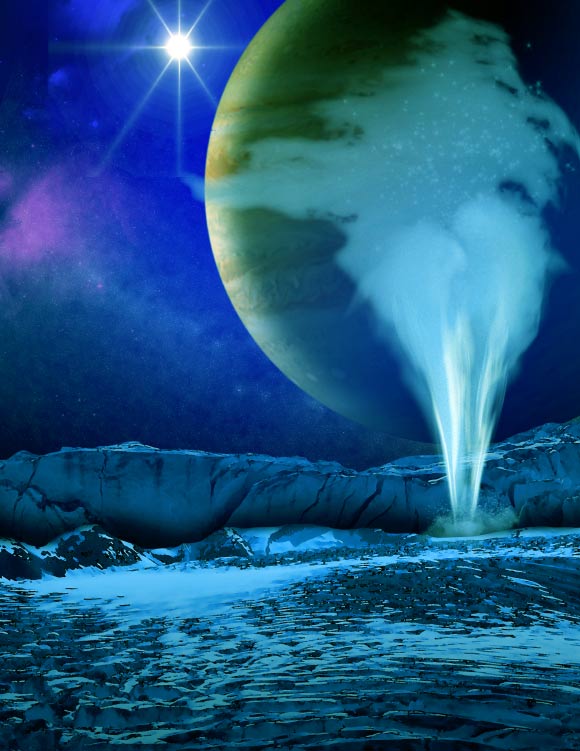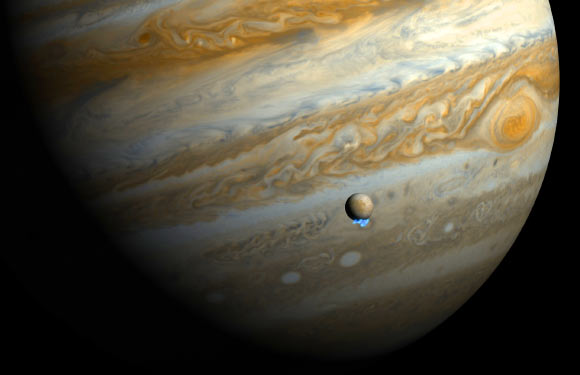An international team of astronomers using NASA’s Hubble Space Telescope has discovered strong evidence of giant water-vapor geysers shooting off of Europa, the smallest of Jupiter’s Galilean moons.

This is an artist’s impression of a water-vapor geyser on Europa. Image credit: University of Cologne.
“Water is generally considered a basic prerequisite for life – at least as we know it on Earth. For this reason, the discovery of a water vapor plumes on the moon Europa has increasingly become a focus of extraterrestrial research,” said Dr Lorenz Roth from both the Southwest Research Institute in the United States and the University of Cologne in Germany, who is the lead author of the paper describing the discovery in the journal Science.
In November and December 2012, the Space Telescope Imaging Spectrograph aboard Hubble imaged Europa’s ultraviolet emissions in the search for vapor plume activity.

This artist’s impression shows Jupiter and its moon Europa using actual Jupiter and Europa images in visible light. The Hubble ultraviolet images showing the faint emission from the newly discovered water vapor plumes have been superimposed, respecting the size but not the brightness of the plumes. Image credit: NASA / ESA / M. Kornmesser / L. Roth, Southwest Research Institute and University of Cologne / J. Saur, University of Cologne / K. Retherford, Southwest Research Institute / D. Strobel and P. Feldman, Johns Hopkins University / M. McGrath, Marshall Space Flight Center / F. Nimmo, University of California, Santa Cruz.
The images revealed faint ultraviolet light from an aurora at the Europa’s South Pole. This aurora is driven by Jupiter’s intense magnetic field, which causes particles to reach such high speeds that they can split the water molecules in the plume when they hit them, resulting in oxygen and hydrogen ions which leave their telltale imprint in the colors of the aurora.
“We pushed Hubble to its limits to see this very faint emission,” said second author Dr Joachim Saur from the University of Cologne.
The scientists suggest long cracks on Europa’s surface, known as linea, might be venting water vapor into space.
“The discovery that water vapor is ejected near the South Pole strengthens Europa’s position as the top candidate for potential habitability. However, we do not know yet if these plumes are connected to subsurface liquid water or not,” Dr Roth said.
The discovery makes Europa only the second moon in the Solar System known to have water vapor plumes. In 2005, plumes of water vapor and dust were detected by NASA’s Cassini orbiter spewing off the surface of the Saturn’s moon Enceladus.
______
Lorenz Roth et al. Transient Water Vapor at Europa’s South Pole. Science, published online December 12, 2013; doi: 10.1126/science.1247051







